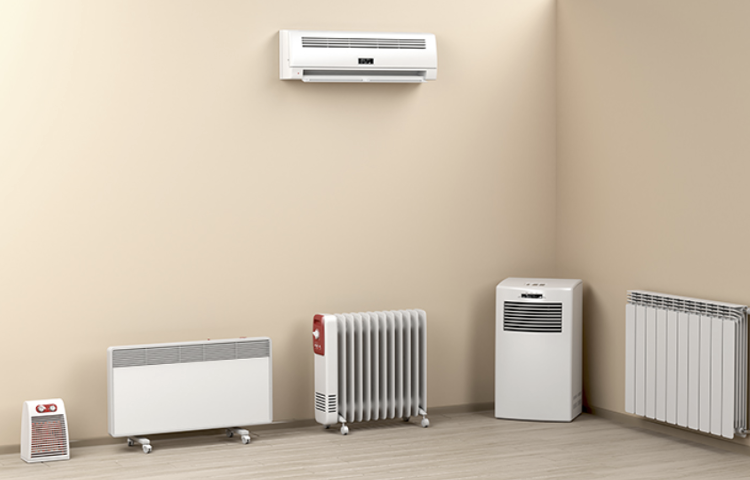There are numerous factors to consider when purchasing an air conditioner. Check out all of the different air conditioners available on the market before buying. Other variables to consider when you’ve settled on the perfect air conditioning system include pricing, features, and energy efficiency.
Air conditioners come in a variety of shapes and sizes.
You can choose from window units to central air conditioning, portable air conditioners, or an inverter air conditioner.
- Air conditioner in the window
The most prevalent type of air conditioner is a window air conditioner. If you glance up when walking along a city street in the summer, you’ll notice a lot of these in the windows above you. Or, even worse, and more common, you’ll become imprisoned by its condensation!
The exhaust system of an air conditioner, which is generally positioned in a window, pushes hot air out the rear and sides while the refrigerant cooling system faces inwards.
These units are usually only capable of cooling one room at a time, so if you have a large house, you may need one for each area you want to chill. These remain the most popular alternative for folks living in tiny homes or apartments due to their low cost. Another benefit of window units is that they can be moved from room to room as needed, and they may be removed during the colder months.
Window air conditioners have the disadvantage of reducing the usage of the window in which they are located, in terms of access to fresh air and the amount of light that enters the room. Burglars can readily compromise window units situated in windows near the ground, which is a less common danger but one to be aware of.
- Central Air Conditioning
Central air conditioning, or “central air,” is the most effective air conditioning method for those with a large home who want to cool multiple rooms at once.
The cooling compressor, which is positioned outside the home and cools the air, is the first component of the system. A refrigerant-filled coil cools the air. It is then blasted by a fan and circulated throughout the house via the duct system.
Central air conditioning circulates cool air throughout a building using these supply and returns ducts, while hot air is produced through the return system and vented out of the house via an exhaust system.
Your central air conditioning system will use the same ductwork that your heating system utilizes to direct air from the furnace. Although most older homes do not have central air, they do have this duct system, which makes main air installation simple if you wish to do so.
- Inverter Air Conditioner
We have it turned off, we hit the power button, and the unit starts to start and does it little by little (there is no decline in intensity in the electric current or the bulbs observed when the light goes out). Inverter units start slowly. They treat it as a long-term race. However, it is gradually “revolutionizing” or growing its authority.
Inverter air conditioning units may alter their power in response to your needs, which means that the unit’s usage adapts to the situation and significantly reduces electricity consumption. If that weren’t enough, it could continuously operate in optimal conditions thanks to its electronics, responding to the environment where it finds itself, whether it’s very cold or hot.
Fixed air conditioners provide less comfort and are slower than inverter air conditioners. Inverter units reach the setpoint temperature faster than set units. Because they can regulate their cooling power, they can maintain our room’s room temperature much more precisely than fixed units, which gradually reduces their energy as they reach the desired temperature, never stopping.
Another area where an inverter air conditioning unit outperforms a non-inverter unit is in the operating range. When the outside temperature reaches between 5 and 0oC, a non-inverter unit begins to drop performance abruptly, even becoming inefficient and useless to continue working if the outside temperature drops even further.
When working as a heat pump, the outdoor unit or condenser cools and eventually freezes, making it impossible to exchange heat or cold outside. This is solved by the so-called « defrost» or defrost that practically all units of this type have. With this defrost, the air conditioning unit sends the heat that should go to the indoor unit to heat our house for a few minutes to the outdoor unit to heat our house. Keeping this in mind, we highly recommend you invest in the best 2-ton inverter AC for your home.
- Portable Air Conditioner
Portable air conditioners are another type of “unitary” or self-contained air conditioning equipment, similar to window air conditioners. This means that portable air conditioners have all of their essential components in one unit, similar to window air conditioners.
When the arrangement of a room or building restrictions and regulations prevent installing a window unit, these units are most typically employed. They work by cooling the air within the unit with a condenser coil and then exhausting the hot air through a vast exhaust hose.
The exhaust pipe, which looks like a vacuum cleaner hose and links the unit to several airtight windows, directs the exhaust to the outside. Typically, these window kits are included with the unit.
These units are often noisier than regular air conditioners since the condenser and exhaust fan are placed within the same housing. The evaporator fan produces a lot of noise. This is the fan that blows out the condensation accumulated inside the unit.
Furthermore, these devices are useless in rooms larger than 20 square meters.
Many people regard portable air conditioners as the last alternative when a window unit is not practicable due to their noise and relative fragility. These units, to their credit, are light and frequently feature wheels, making them easy to transfer between rooms.




